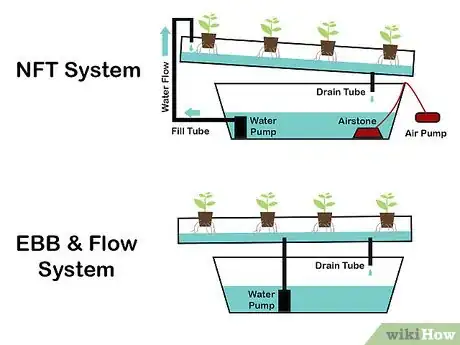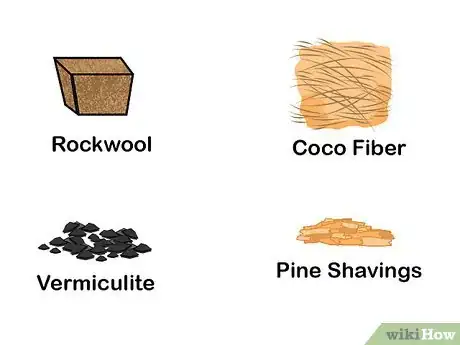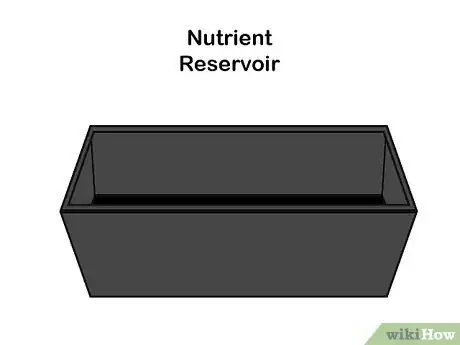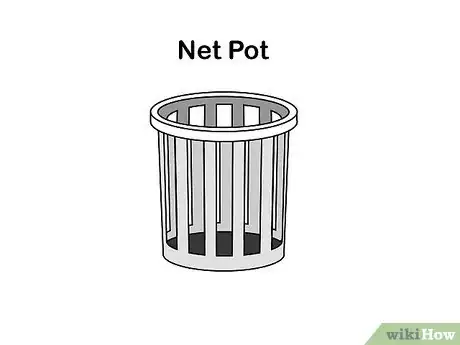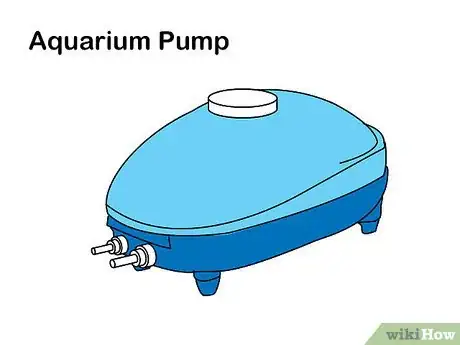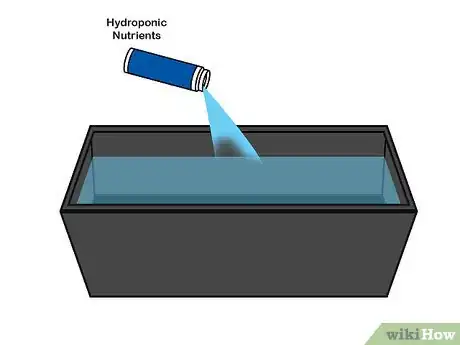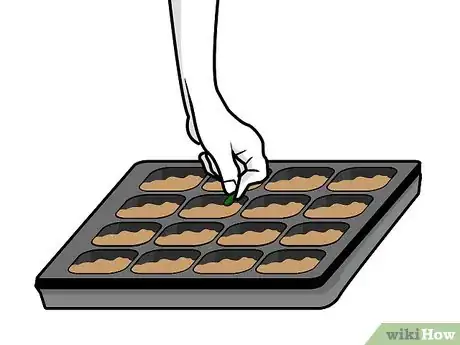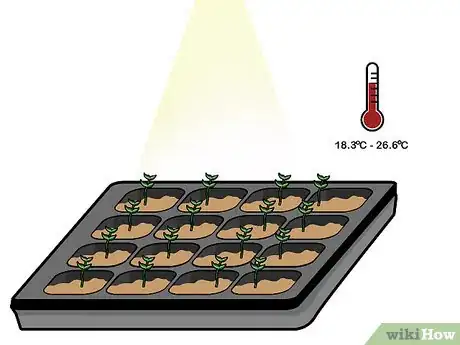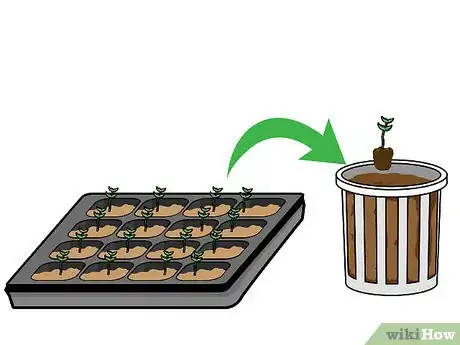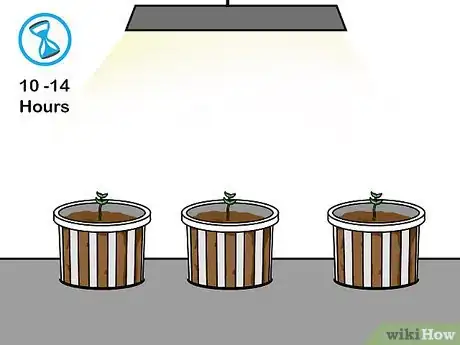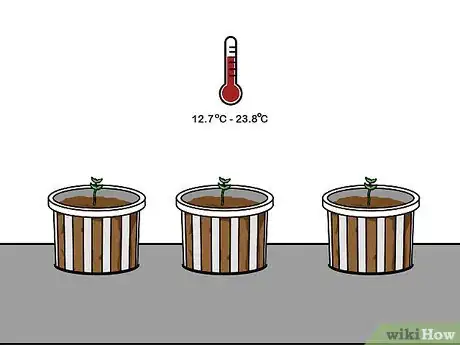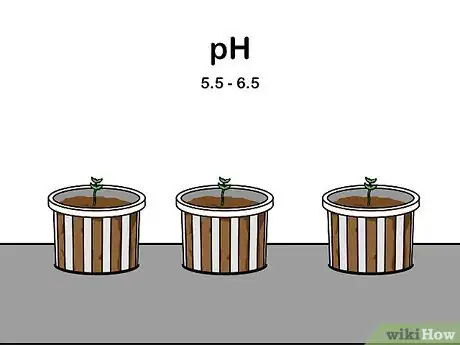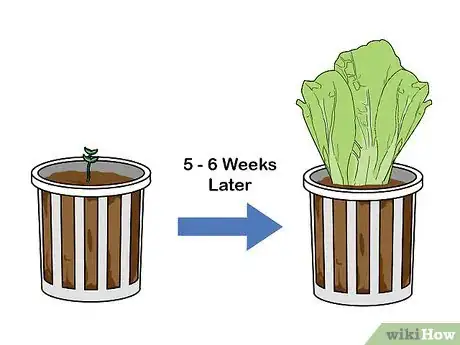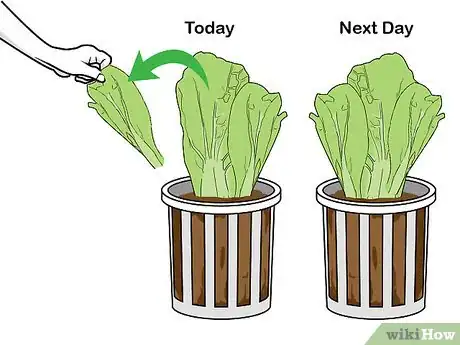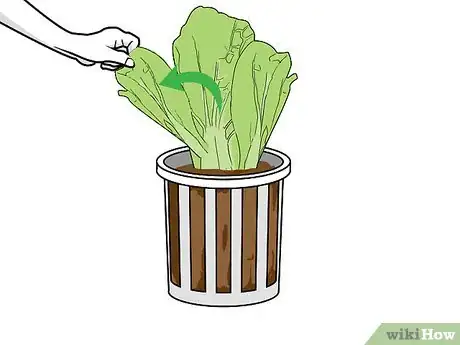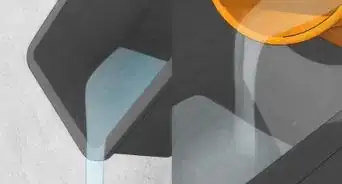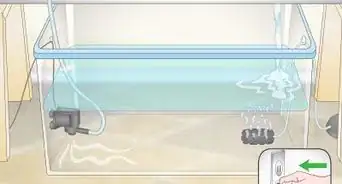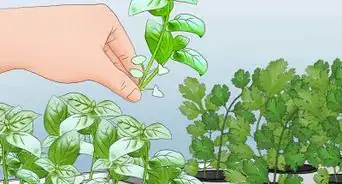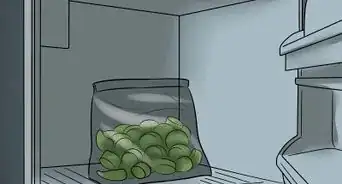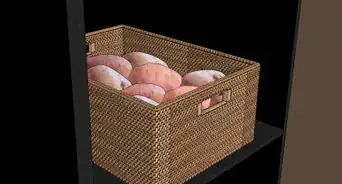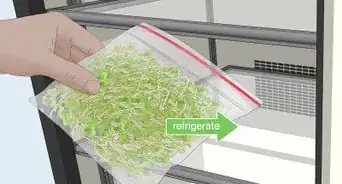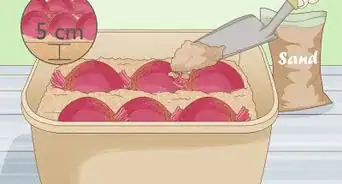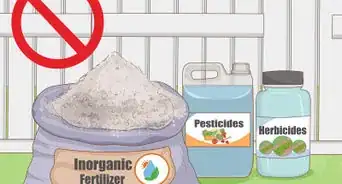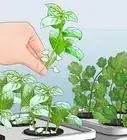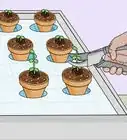This article was co-authored by Maggie Moran. Maggie Moran is a Professional Gardener in Pennsylvania.
There are 9 references cited in this article, which can be found at the bottom of the page.
wikiHow marks an article as reader-approved once it receives enough positive feedback. In this case, 87% of readers who voted found the article helpful, earning it our reader-approved status.
This article has been viewed 264,715 times.
If you’re itching to have a garden but don’t have the yard space, growing hydroponically, or without the use of soil, is a solid alternative.[1] Lettuce is the easiest vegetable to grow hydroponically, so it’s a great place to start. Set up your hydroponic system, tend to the plants, and harvest your first crop of lettuce in a matter of weeks. If you get these basics down, you can have home-grown lettuce all through the year!
Steps
Setting Up
-
1Pick your preferred type of lettuce. You can grow most varieties of lettuce hydroponically. Tom Thumb is a good option if you’re trying to take up a little less room, Bibb lettuce is a little bit of an easier variety to grow, and Romaine works well but takes a bit more time.[2] Pick whichever variety you prefer, and consider the slightly different requirements and tendencies that your particular type has.
-
2Use a water culture system. There are many different kinds of hydroponic systems that you can grow plants in, including drip systems, NFT systems, ebb-flow systems, aeroponic systems, and many more.[3] Water culture systems, in which plants float directly on top of water while their roots grow down and absorb nutrients, are the most effective and simplistic.Advertisement
-
3Select a growing medium. You have a lot of different media options to choose from, including: rockwool, coco fiber, vermiculite, pine shavings, river rock, sand, and many more. All of these options have positive and negative aspects, but picking any one of them will allow you to grow lettuce without a problem.
- Rockwool is the most popular medium choice and is both sterile and porous. If you go with rockwool, be careful to keep it from becoming too saturated. This can lead to root suffocation, stem rot, and root rot.
- Grow rock is another popular option that has a neutral pH and holds moisture well. This medium is reusable if cleaned thoroughly, which can be beneficial for growing hydroponically in your home, but might be tedious on a larger scale.[4]
-
4Get a container that will act as a nutrient reservoir. Purchase a large storage container or fish tank to use as a nutrient reservoir for your lettuce. Choose a container with a large surface area, but also make sure it’s at least 8 inches (20 cm) deep so that the plant roots can grow downward without trouble.
- Do not use a metal container as your nutrient reservoir. Metals can corrode or oxidize, releasing chemicals that can disrupt the supply of nutrients to your plant.[5]
-
5Prepare net pots and floating platforms. There are several different materials, such as styrofoam or the lid of your reservoir container, that you can use to set up a stable way for your plants to sit above the water with their roots submerged.[6] Drill holes into polystyrene planks that are about twelve inches apart. Drill as many holes and get as many net pots as will accommodate each seedling that you have.
-
6Set up an aquarium pump to provide necessary aeration. You’ll need to have a system in place that creates air bubbles or recirculates the water in your reservoir so that the plant roots don’t suffocate. Keeping an aquarium pump in your reservoir will prevent this issue.[7]
-
7Provide the reservoir with a mixture of hydroponic nutrients and water. You can buy nutrient combinations at gardening stores that are specifically for growing hydroponic plants. Lettuce typically requires high levels of potassium, calcium, and magnesium.[8] Follow the nutrient kit directions for mixing the nutrients with water and put the mixture in your container.
- Some lettuce types are more sensitive to nitrogen that others, so make sure that the nutrients that you purchase are for the right kind of lettuce.
-
8Create a nursery so that your seeds can germinate. Before putting your hydroponic system to use, you’ll need to use an egg carton or plugs, which are small cells, to create a stable initial environment for your plants. Fill your plugs with your medium of choice and with your hydroponic seeds.[9]
Caring for the Lettuce
-
1Tend to your sprouting seedlings. In order to get your lettuce started, water your nursery every other day and keep it in a well-lit or naturally sunny area where it is between 65° and 80° Fahrenheit (18.3-26.6° Celsius). Grow these until the seedlings are 2 inches (5 cm) tall and have about 4 leaves.[10]
-
2Transplant your seedlings to the reservoir. Carefully, without tugging, take your individual seedlings from their cells to the net pots. Align each net pot with the holes you drilled into the floating platform or lid of the container, and then place them in your reservoir.[11]
-
3Give the lettuce plants 10-14 hours of fluorescent light per day. Unlike other plants, lettuce neither requires a long duration nor an intense amount of exposure to light in order to grow. You have other options, but fluorescent lighting is the best because it requires a low initial investment, consumes a small amount of power, and produces a low amount of heat.[12]
-
4Keep the temperature between 55 and 75° Fahrenheit (12.7-23.8° Celsius). Lettuce is a crop that grows better in a cooler environment. For the best results, keep the temperature around 55° Fahrenheit (12.7° Celsius) at night and around 75° Fahrenheit (23.8° Celsius) during the day. If the lettuce gets too hot it will bolt, or flower, which isn’t good because this will create a bitter taste in the lettuce leaves.[13]
-
5Make sure the pH stays between 5.5 and 6.5. A plant’s pH level refers to how acidic or basic it is, and determines whether or not it can properly absorb the nutrients available to it. Frequently test the pH with an inexpensive paper strip test and make sure it’s slightly acidic to almost neutral for the best possible production.
- Purchase both up and down pH adjusters that, when added to your reservoir, will be able to bring the pH back to the correct level.[14]
Harvesting the Lettuce
-
1Pick outer leaves only. After 5-6 weeks, your lettuce should be fully grown and ready to pick and eat! To make sure that your lettuce plants continue to produce large amounts of healthy lettuce, pick the outer leaves and leave some of the inner ones attached to the plant. It won’t take much time for those inner leaves to replace the ones you picked.
-
2Rotate which plants you pick from. Avoid picking all of the leaves from each plant at once. Pick leaves from one plant one day and another plant a few days later. This will allow you to enjoy the right amount of lettuce at a time, instead of going through periods of not enough production or too much production.[15]
-
3Move the rooted crop to a cold, humid environment to keep it fresh. If the lettuce is fully grown and you don’t want to eat it right away, keep the plants rooted and store them in a humid, nearly freezing environment to ensure freshness for up to a month.
Managing Pests and Disease
-
1Ensure proper air circulation to prevent bacteria and mildew. Hydroponic gardens should be well ventilated to help your plants get the CO2 they need and prevent the growth of molds and bacteria. Leave a door or window open near the plants, or consider installing a vent with an exhaust fan if you are growing your lettuce in an enclosed space. Place your hydroponic garden under a ceiling fan, or set up an oscillating floor fan nearby and set it on low.
-
2Use screens and sticky traps to keep away insect pests. Make sure any nearby windows are covered with a fine-mesh insect screen. Check the screen for holes and tears. Any vents should also be screened. Hang up fly tape to catch any flying insects that manage to get through.
-
3Minimize direct sunlight to prevent algae growth. Algae tend to flourish in the damp conditions of a hydroponic garden. However, algae cannot grow without direct sunlight. If your lettuce is exposed to direct sun during the day, put a shade over the plants.
-
4Sterilize your equipment to prevent water-borne molds. If you are having issues with water-borne molds and other diseases, sanitize your equipment with a 2% bleach solution or a commercial sanitizer such as GreenShield. Sterilize all pots, reservoirs, tanks, and any other equipment that contains or supplies water that will come into contact with the plants. Replace any contaminated growing media.
Expert Q&A
Did you know you can get expert answers for this article?
Unlock expert answers by supporting wikiHow
-
QuestionHow fast can you grow lettuce?
 Maggie MoranMaggie Moran is a Professional Gardener in Pennsylvania.
Maggie MoranMaggie Moran is a Professional Gardener in Pennsylvania.
Home & Garden Specialist
-
QuestionCan spinach be grown hydroponically?
 Maggie MoranMaggie Moran is a Professional Gardener in Pennsylvania.
Maggie MoranMaggie Moran is a Professional Gardener in Pennsylvania.
Home & Garden Specialist
-
QuestionCan you regrow lettuce?
 Maggie MoranMaggie Moran is a Professional Gardener in Pennsylvania.
Maggie MoranMaggie Moran is a Professional Gardener in Pennsylvania.
Home & Garden Specialist
Warnings
- If you grow your hydroponic lettuce outdoors on a patio or deck, be sure to protect it from rain so that excess rainwater doesn’t get into the bucket and dilute the nutrients in the water.⧼thumbs_response⧽
- Whether you grow your lettuce indoors or out, you need to watch for insects and pick them off the leaves so that they don’t destroy the plant. Aphids are the most common indoor pest, but if your lettuce bucket is placed outside, be sure to watch for grasshoppers, slugs, and caterpillars as well.⧼thumbs_response⧽
Things You’ll Need
- Hydroponic lettuce seeds
- Plant plugs
- Storage container or fish tank
- Aquarium pump
- Floating tray
- Drill
- Net pots
- Growing medium (gravel, sawdust, vermiculite, etc.)
- Water
- Nutrient salts
- pH test paper strips
- Spoon (for mixing nutrients)
- Ceiling fan or oscillating fan
- Insect screens
- Sticky insect traps
- Shades for your tanks or growing containers
- 2% bleach solution or commercial greenhouse sterilizer
References
- ↑ http://www.dictionary.com/browse/hydroponics
- ↑ https://fifthseasongardening.com/hydroponic-lettuce-simple
- ↑ http://www.homehydrosystems.com/mediums/mediums_page.html
- ↑ http://www.homehydrosystems.com/mediums/mediums_page.html
- ↑ http://www.gtghydroponics.com/faq/hydroponics.aspx
- ↑ http://www.homehydrosystems.com/hydroponic-systems/water-culture_systems.html
- ↑ http://www.homehydrosystems.com/hydroponic-systems/water-culture_systems.html
- ↑ http://luv2garden.com/hydroponic_lettuce.html
- ↑ http://www.hydroponics-simplified.com/hydroponic-seeds.html
- ↑ http://www.hydroponics-simplified.com/hydroponic-seeds.html
- ↑ http://www.homehydrosystems.com/hydroponic-systems/water-culture_systems.html
- ↑ http://www.nosoilsolutions.com/how-to-grow-hydroponic-lettuce/
- ↑ http://www.nosoilsolutions.com/how-to-grow-hydroponic-lettuce/
- ↑ http://www.homehydrosystems.com/system_plans/Other%20Hydroponics%20Related%20Designs/Tips%20for%20Growing%20Plants%20in%20Hydroponic%20Systems/Tips%20for%20Growing%20Plants%20in%20Hydroponic%20Systems.html
- ↑ http://www.nosoilsolutions.com/how-to-grow-hydroponic-lettuce/
About This Article
If you want to grow hydroponic lettuce, pick a lettuce variety and a water culture system for your setup, such as NFT or Ebb and Flow. Grow lettuce seedlings outside of the water culture system, and once they are around 2 inches tall, transplant them into a net pot and place the pot in the reservoir. Make sure the plants have 10-14 hours of fluorescent light per day, and keep the temperature between 55 and 75° Fahrenheit. Check the soil pH to ensure that it's between 5.5 and 6.5. After 5-6 weeks of growth, begin harvesting the lettuce by pulling the outer leaves. For tips from our Horticulturalist reviewer on setting up the water culture system and managing pests, scroll down!

